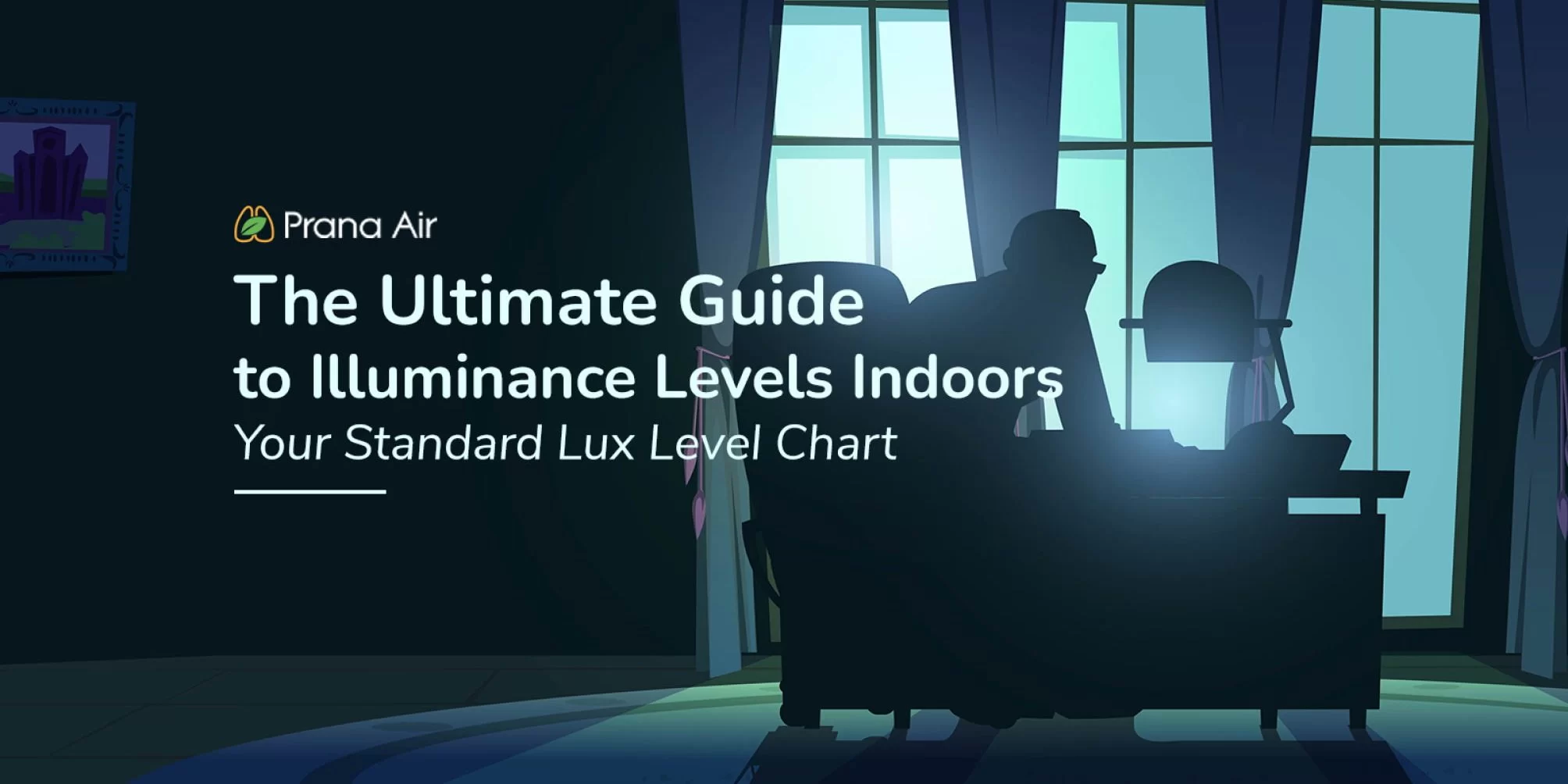Introduction
Illuminance levels are an essential component to consider when designing a comfortable and functional indoor environment. The degree to which light falls on a surface is referred to as illumination levels, which are expressed in lux. Understanding the optimum illuminance levels indoors is critical for providing a safe, comfortable, and productive environment.
Why is illuminance important?
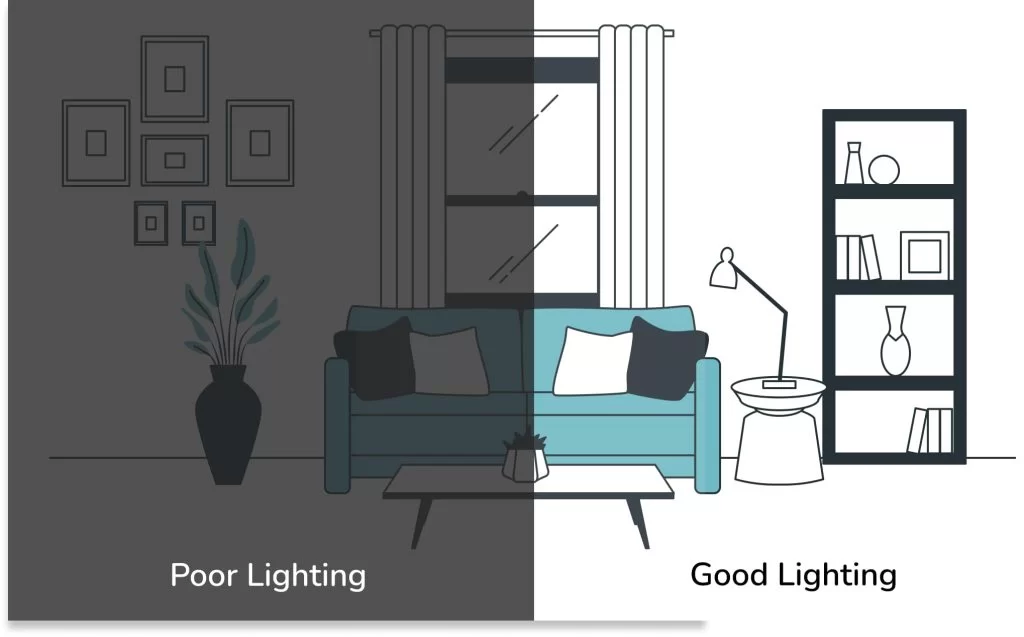
There are various reasons why illuminance levels indoors are important. For example,
- It impacts our capacity to see and accomplish jobs successfully. Therefore, inadequate illumination can cause eye fatigue, headaches, and difficulties focusing, whereas excessive brightness can induce glare and discomfort.
- Proper illuminance levels are essential for safety, especially in settings such as factories, storage facilities, and other enterprises. Insufficient illumination can increase the likelihood of incidents and injuries, whereas good lighting can assist in avoiding them.
- Light levels can influence our emotions and productivity. Proper lighting can help to create a warm and appealing environment that fosters relaxation and productivity, whilst inadequate lighting can have the opposite impact.
- Therefore, we can build surroundings that are safe, comfortable, and accommodating by knowing illuminance levels and optimizing lighting in indoor places.
Understanding the standard lux level chart
The standard lux level chart is a guide that provides recommended illuminance levels for different indoor settings. Moreover, it helps to ensure that there is enough light in a space to perform tasks comfortably and safely.
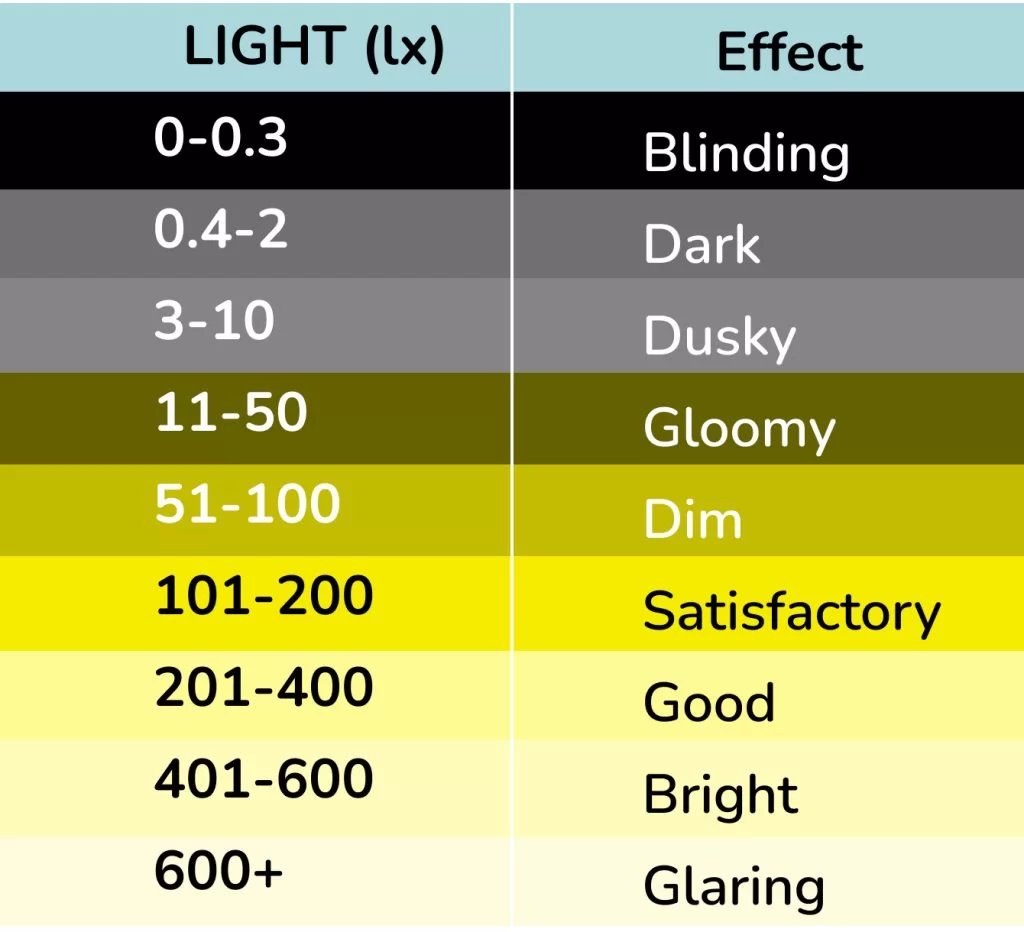
The standard lux level chart provides guidelines for recommended illuminance levels in various settings. For general office tasks, a minimum illuminance level of 300 lux is suggested. However, for more detailed work, a higher level of 500 lux is recommended. In settings where visual tasks are particularly demanding, such as design studios, the recommended level is even higher, ranging between 750 to 1000 lux. In other words, the appropriate illuminance level depends on the type of task and the level of visual detail required.
Recommended lux levels for different indoor settings
Illuminance requirements vary depending on the indoor environment. Here are some recommended lux levels for common and industrial indoor settings:
RESIDENTIAL AREAS
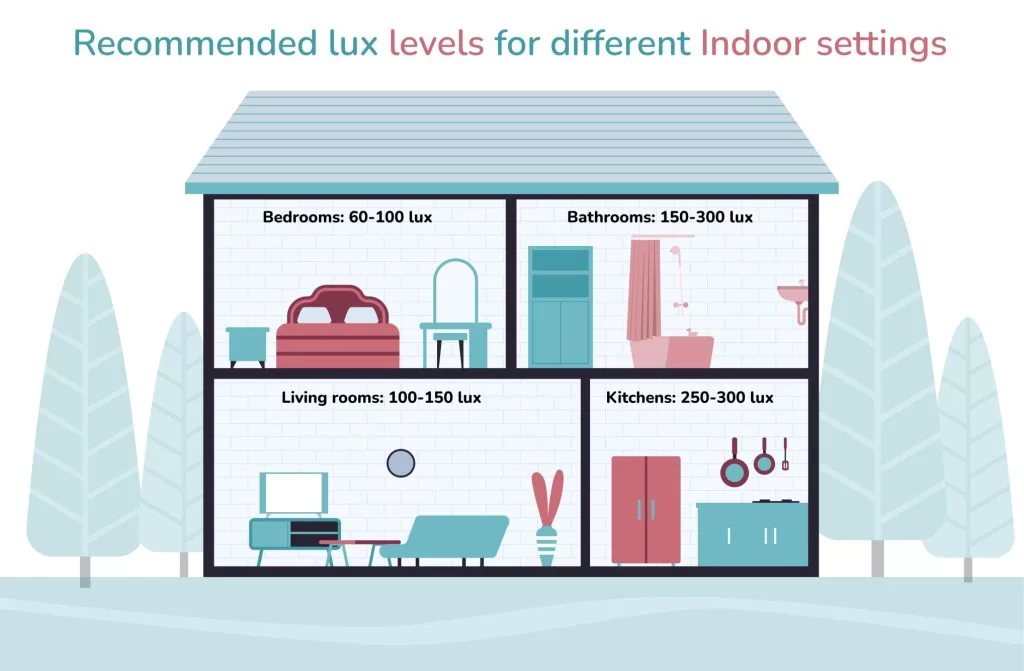
- Living rooms: 100-150 lux
- Bedrooms: 60-100 lux
- Kitchens: 250-300 lux
- Bathrooms: 150-300 lux
EDUCATIONAL FACILITIES
- Classrooms: 300-500 lux
- Libraries: 500 lux
- Laboratories: 750-1000 lux
HEALTHCARE FACILITIES
- Operating rooms: 1000-1500 lux
- Examination rooms: 700-1000 lux
- Patient rooms: 100-200 lux
OFFICES
- Office-Open: 300-500 lux
- Conference room: 300-500 lux
RETAIL SPACES
- General sales area: 750 lux
- Display areas: 1000-2000 lux
- Changing rooms: 200-300 lux
Industries
CHEMICALS
- Exterior walkways, platforms, stairs, and ladders: 30-100 lux
- Control rooms for process plant: 200-500 lux
- Grinding, granulating, mixing, drying, tableting, sterilizing, preparation of solutions, washing, preparing, hardening: 300-750 lux
- Inspection: 300-750 lux
FOOD, DRINK, AND TOBACCO
- General: 200-500 lux
- Inspection: 300-750 lux
- Grading and sorting of raw materials: 500-1000 lux
- Automatic processes: 150-300 lux
- Labeling and packaging: 200-500 lux
- Mills-Milling. Filtering and Packing: 200-500 lux
- Bakery: 200-500 lux
- Chocolate and Confectionery Manufacturing: 200-500 lux
- Tobacco processing- Material preparation, making, and packing: 300-750 lux
Factors that affect illuminance levels indoors
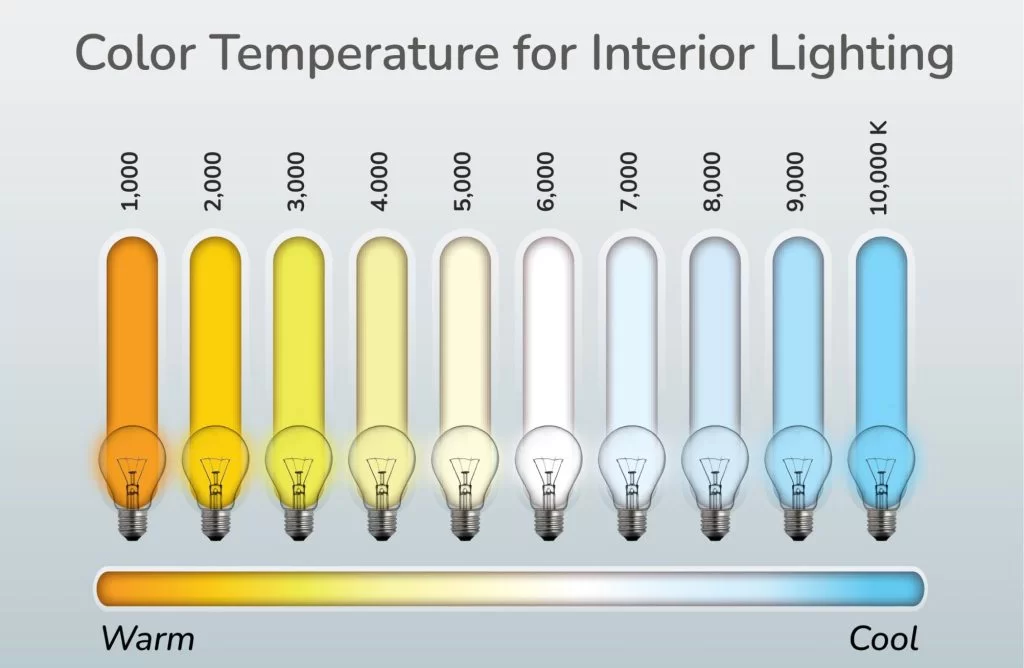
Several factors can affect illuminance levels indoors. These include:
- There are several important factors that need to be taken into consideration when selecting lighting fixtures for indoor spaces. These factors include the type of lighting fixtures used, the color temperature of the light, the distance between the light source and the surface being illuminated, and the angle of the light. Each of these factors contributes to the overall lighting scheme and can have a significant impact on the ambiance and functionality of the space.
- The type of lighting fixtures used can affect the spread of light and the direction of the light. For example, recessed lighting fixtures provide a more focused beam of light, while pendant lighting fixtures provide a wider spread of light.
- The color temperature of the light can affect the mood and the perception of the space. For example, cool, white light is more energizing and is ideal for workspaces, while warm, yellow light is more relaxing and is ideal for residential spaces.
Measuring illuminance levels
When measuring illuminance levels, it is necessary to use a light meter or sensors that can accurately measure the amount of light falling on a surface. To ensure accuracy, it is essential to take multiple readings throughout the space. This is particularly important in areas where the lighting conditions vary, such as near windows or skylights. In other words, measuring illuminance levels requires careful consideration and attention to detail in order to achieve accurate and reliable results.
Tips for optimizing indoor lighting for maximum illuminance
Optimizing indoor lighting for maximum illuminance requires careful planning and the use of the right lighting fixtures. Here are some tips for optimizing indoor lighting:
- Use a combination of natural and artificial lighting to maximize illuminance levels.
- Use overhead lighting fixtures to provide general lighting and task lighting for specific workstations.
- Use pendant lighting fixtures to provide a wider spread of light in larger spaces.
- Use lighting controls, such as dimmer switches or timers.

Common illuminance level mistakes to avoid
Several common illuminance-level mistakes should be avoided. These include:
- Over-lighting or under-lighting a space.
- Using the wrong color temperature for the lighting fixtures.
- Placing light fixtures too close or too far from the surface.
- Using one type of lighting fixture for the entire space without considering the different lighting needs of each area.
Conclusion: Achieving the right illuminance levels for your indoor space
Achieving the appropriate illuminance levels in indoor spaces requires careful planning and the use of suitable lighting fixtures. Fortunately, the standard lux level chart provides valuable guidance for recommended illuminance levels in different indoor settings. By consulting this chart, one can determine the appropriate level of illuminance required for a given space, and select the appropriate lighting fixtures to achieve this level of illumination. In other words, the standard lux level chart is an invaluable resource for anyone looking to achieve optimal lighting conditions in indoor spaces.
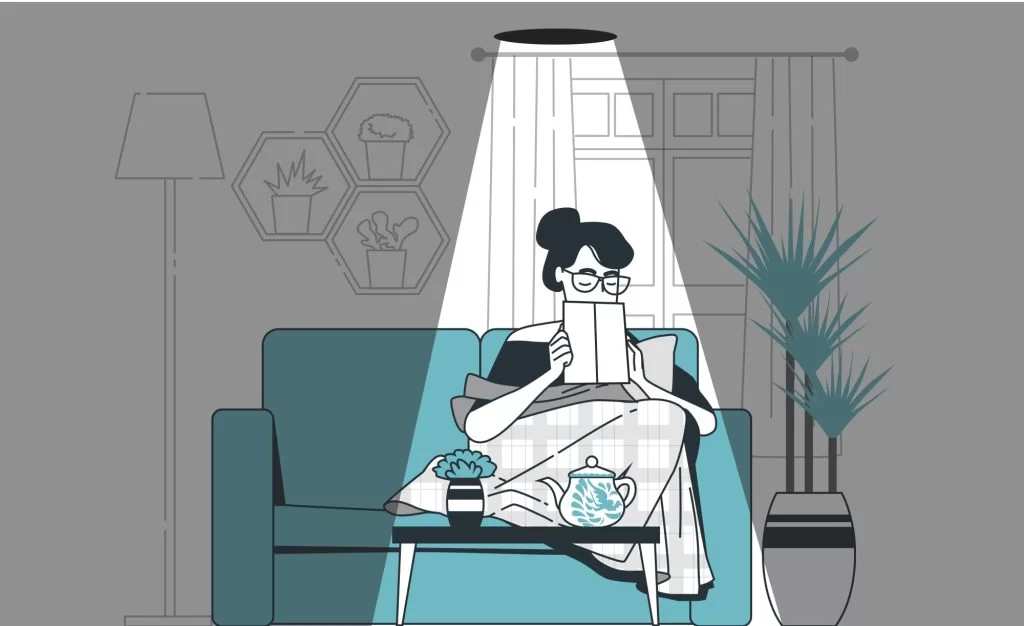
When considering lighting options for a space, there are several factors to take into account. These factors include the type of lighting fixtures used, the color and temperature of the light, the distance between the light source and the surface being illuminated, and the angle of the light. Each of these factors plays a critical role in achieving the desired level of illumination and creating the right ambiance for the space. Therefore, it is important to carefully consider each of these factors and make informed decisions when selecting lighting fixtures and designing lighting schemes for indoor spaces.
By following these guidelines, monitoring your illuminance levels, and therefore avoiding common illuminance level mistakes, you can create a comfortable and safe environment that maximizes productivity and reduces the risk of accidents.

